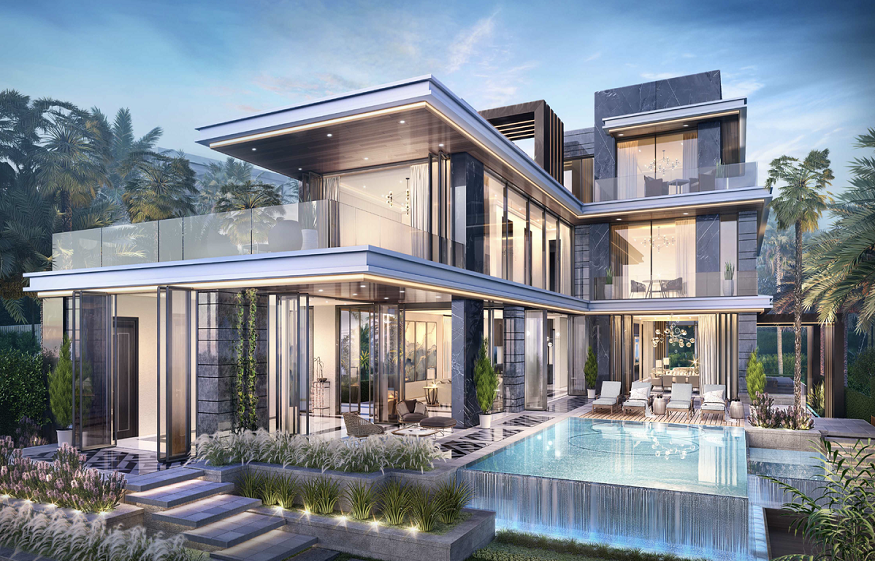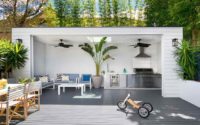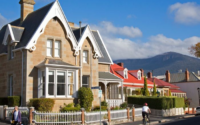Desert Landscaping vs. Green Landscaping: What’s More Sustainable for Dubai Villas?

Dubai’s villa communities are known for their grandeur, innovative architecture, and attention to detail—including outdoor landscaping. In a city built on desert terrain, the contrast between lush green lawns and native desert-inspired landscapes often sparks a crucial debate: which is more sustainable for Dubai villas—green landscaping or desert landscaping? With rising awareness about environmental impact, water conservation, and long-term maintenance, this choice is now more than just an aesthetic decision—it reflects lifestyle, responsibility, and future investment value.
For homeowners and investors seeking luxury property in Dubai, the outdoor environment plays a major role in the overall appeal and value of the estate. Whether located in Emirates Hills, Palm Jumeirah, Al Barari, or Arabian Ranches, villas are increasingly being judged not just on their architecture or interiors but also on how eco-conscious and functional their outdoor spaces are. Landscaping, once seen as merely decorative, is now a focal point in discussions about sustainability and smart living.
Understanding the Two Approaches
Green Landscaping refers to traditional gardens that often include expansive grass lawns, flowering plants, exotic trees, and water features. This style is commonly associated with Western aesthetics and is designed to create a lush, natural feel—even in arid environments like Dubai.
Desert Landscaping, also known as xeriscaping, focuses on native or drought-tolerant plants, gravel, sand, rocks, and minimal water use. It embraces the natural desert environment rather than trying to transform it into something it’s not.
Water Usage: A Key Differentiator
One of the most critical sustainability issues in Dubai is water consumption. Green landscaping requires vast amounts of water for irrigation, especially during the scorching summer months when temperatures often exceed 45°C. Despite the use of treated sewage effluent (TSE) for irrigation, the environmental cost and resource strain remain high.
In contrast, desert landscaping uses minimal water. Drought-resistant plants like succulents, cacti, and native shrubs can survive and thrive with very little irrigation. By reducing dependency on artificial watering systems, desert landscaping significantly lowers water bills and environmental impact.
Maintenance and Cost Considerations
Green landscapes demand constant upkeep—mowing, trimming, pest control, and replanting. These high maintenance needs translate into increased labor, higher expenses, and regular use of fertilizers and chemicals, which may have adverse environmental effects.
Desert landscaping, by design, is low-maintenance. Gravel beds, hardscapes, and native flora require less intervention, making them more cost-effective over time. While initial installation might be slightly more expensive due to specialized design and materials, the long-term savings on water, maintenance, and chemicals make it a smart investment for villa owners.
Climate Compatibility and Longevity
Dubai’s hot, arid climate is naturally more suited to desert landscaping. Green landscapes often struggle to stay lush during extreme heat, leading to dead patches, wilting plants, and unsightly lawns that need frequent replacement.
On the other hand, desert landscapes are built to last. Rocks, sand features, and hardy desert plants can withstand the harshest conditions with minimal care, ensuring that the outdoor area remains attractive and usable year-round.
Aesthetic Appeal and Customization
While some may argue that green lawns are more visually appealing or luxurious, modern desert landscaping has evolved significantly. Today’s designs blend natural beauty with artistic elements—using boulders, drought-resistant ornamental grasses, sculpture, and lighting to create serene, contemporary outdoor spaces that rival traditional gardens.
Moreover, landscaping doesn’t have to be purely green or purely desert. Many villa owners now opt for hybrid models—incorporating desert elements with small green patches using artificial grass or high-efficiency irrigation systems to balance aesthetics and sustainability.
Environmental and Social Responsibility
Opting for sustainable landscaping is more than a personal choice—it’s a commitment to Dubai’s vision for a greener future. Desert landscaping aligns with the UAE’s broader goals of reducing water waste and promoting eco-friendly practices in all areas of development.
In luxury villa communities, adopting sustainable practices also sets an example and adds prestige. Forward-thinking homeowners and developers are using landscaping to demonstrate leadership in sustainability and responsibility—an increasingly important value for high-net-worth individuals investing in luxury property in Dubai.
Conclusion
The debate between desert and green landscaping is no longer just about personal preference; it’s about aligning your villa investment with long-term environmental and economic sustainability. While green landscaping may offer an initial visual impact, its ongoing water use, high maintenance, and limited compatibility with Dubai’s climate raise concerns.
Desert landscaping, on the other hand, provides a forward-looking alternative—harmonizing with the natural environment, saving resources, and requiring less upkeep. For owners and investors of luxury property in Dubai, it’s an opportunity to blend style with substance, creating outdoor spaces that are as smart as they are stunning. As the city continues to lead in sustainable development, the future of landscaping in Dubai villas looks increasingly rooted in the desert.



